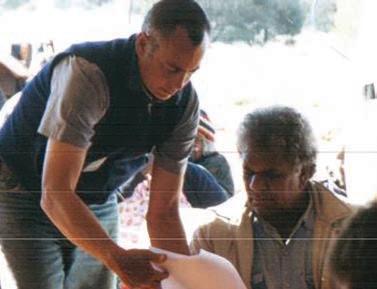
19 minute read
Vale Mr Peter De Rose
On 3 June, 2020, many people celebrated Mabo Day, the anniversary of the day in 1992 that the High Court handed down the the Mabo decision, which recognised that Aboriginal and Torres Strait Islander peoples have a special relationship with the land.
When Mr Eddie Koiki Mabo and other people from the island of Mer in the Torres Strait received legal recognition of their traditional ownership of their country, they paved the way for a similar recognition to be given to other Indigenous Australians.
Advertisement
From that historic decision, the Native Title Act, which governs native title today was created by the Federal Government and the states.
The Prime Minster Paul Keating spoke about the significance of the Mabo decision in a national address in 1993.
“The Court’s decision was unquestionably just. It rejected a lie and acknowledged the truth. The lie was terra nullius, the convenient fiction that Australia had been a land of no one. The truth was native title. The fact that the land had once belonged to Aboriginal and Torres Strait Islander Australians, and that in some places, our legal right to it had survived the 200 years of European settlement.
Mr Keating said that the Court had issued a challenge that “the country could not ignore, either legally or morally”. He explained that it created “another form of title that had to become part of the way we managed land in Australia”.
Mr Keating also acknowledged Australia’s history that had preceded that decision.
“Over tens of thousands of years, Aboriginal people had developed a complex culture, built on a profound attachment to the land. The land nourished them spiritually, as well as materially. In the landscape and the life upon it, they saw evidence of the epoch of creation. Down through the generations, they passed on laws, customs, traditions, and ceremonies, reflecting an obligation to care for the land, which went to the heart of their society. Yet this most remarkable fact about Australia, this oldest continuous civilisation on earth, has until now been denied by Australian law.
“The first European settlers declared that the land had belonged to no one, and the Indigenous Australians were shunted aside, often with appalling brutality. Much of the despair and degradation, conflict and disease, and many of the problems which Aboriginal Australians face today are a consequence of this dispossession” he said.
Mr Keating then laid out the basic structures of the Native Title Act, which had been negotiated with the States.
“The legislation which we will introduce… will enable us to determine who has native title, where, and the rights involved.
“It will give Aboriginal people holding native title, the right to negotiate about actions affecting their land, are right, but not a veto.
“It will permit governments to step in and decide in the final analysis, whether an important economic project should proceed.
“It will have the Commonwealth government play its proper role in setting clear rules and standards for dealings, which affect native title.
“It will leave land management to the state and territory governments, if they accept the national standards. “It will set up a system of courts and tribunals in effect as an umpire on matters of native title. It will to the extent practicable, preserve native title from extinguishment, and where it is extinguished insure, just compensation.
“And it will provide security so that no one who owns a home, a farm, a mine, a tourist operation, no one need to have concern about their tenure.”
Mr Keating acknowledged that the Act was a compromise in many ways.
“No one group will get all they want from this legislation. Not Aboriginal people, not industry, not governments.
“There’s only one way to provide certainty, and that is with a single uniform national approach, a fair and predictable set of rules which everyone can work with.”
The Native Title Act has undergone challenge and amendments since its enactment in 1993, but remains as the basis of widespread recognition of Indigenous peoples connection with their traditional country.
Yankunytjatjara and western desert people have recently faced the sad loss of a senior elder and leader.
Mr Peter De Rose passed away in Adelaide in May following a long battle with illness. He was a strong community leader, beloved by his family and community.
Kunmanara De Rose was a strong supporter of native title for Anangu. He worked with other Anangu leaders and garnered support around securing native title recognition. In doing so, he and other Anangu leaders left a remarkable legacy in the recognition of native title in South Australia and nationally.
In December 1994, Kunmanara De Rose was one of a group of 12 Yankunytjatjara traditional owners to file an application in the Federal Court of Australia for a determination of native title over the De Rose Hill pastoral station. This was just the third application filed in South Australia. The property and claim covered some 1865 square kilometres of land adjacent to the Anangu Pitjantjatjara Yankunytjatjara freehold lands in the far north west of South Australia.
The De Rose Hill application was made on behalf of nguraritja – Anangu from this country. This included Mr De Rose, who was born on the station under an ironwood tree in the mid 1940s. Mr De Rose grew up, lived and worked with his and other Anangu families on the station. His skills and passion for horses and cattle led to him being head stockmen for the station in the mid 1970s. His cultural knowledge of country and Wapar or Tjukurpa developed immensely over this time, living with and learning from old people – tjilpi tjuta.
By the late 1970s, Mr De Rose and other Anangu families all left the station property to live at Indulkana and other APY communities. De Rose Hill station, however, remained home for nguraritja, with Mr De Rose and families continuing to return to the station to utilise and look after country and culture.
Twenty years on in the late 1990s, the strength of cultural knowledge and ongoing cultural practices of Mr De Rose and others was challenged as the De Rose Hill native title application was listed for trial as a test case for South Australia. The Federal Court trial took place over 68 hearing days between June 2001 and February 2002. Following a series of appeals and judgements, a positive determination of native title by the full Federal Court in 2005 was upheld after an appeal by the pastoralists was dismissed in February 2006.
The Court held that native title exists on De Rose Hill and is held by Aboriginal people who are nguraritja according to the relevant traditional laws and customs of the Western Desert. This was the first determination of native title in South Australia. The case provided an important foundation for later native title determinations, including those across the western desert and pastoral areas in South Australia.
The leadership of Mr De Rose was extremely important in supporting Anangu participate in this difficult legal process. His evidence drawing on his cultural knowledge and practices was also extremely important in demonstrating to the Federal Court of the native title rights and interests held by De Rose Hill nguraritja.
In 2013, a further milestone was achieved for De Rose Hill nguraritja when a positive determination for compensation was made by the Federal Court. This was the first positive determination for native title compensation in Australia. Mr De Rose again provided valuable leadership and gave important evidence in achieving this outcome.
For SANTS and our staff, we have worked with Mr De Rose across three decades. Over this time, he shared much of his life, his culture and country with us in fighting for the recognition of Anangu rights and interests. Those times spent on country with Mr De Rose will remain in our hearts. Kunmanara De Rose will be sadly missed.
SANTS are currently working with family to support sorry business and to return Kunmanara De Rose to home.
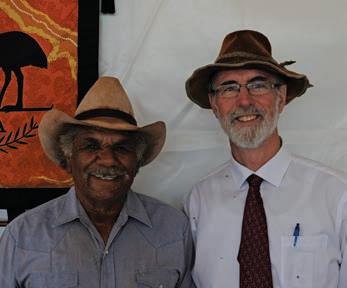
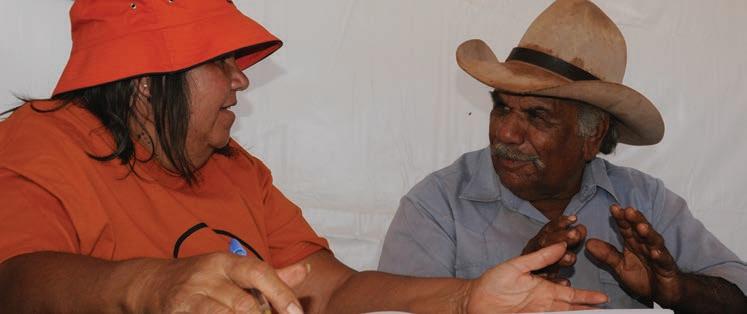
(Name and photos used with permission of family.)
Let ’s Talk: Race Relations in SA with ALRM and Reconciliation SA
Following outrage around the world sparked by the murder of George Floyd by a police officer in Minneapolis, Aboriginal Legal Rights Movement and Reconciliation SA have co-hosted a forum – Lets Talk: Race Relations in SA & the Impact of Black Lives Matter.
According to Reconciliation SA CEO Shona Reid, the online forum aimed “to provide the broad South Australian community an opportunity to hear from a range of experts in their fields how on race relations here in South Australia and …how South Australia has responded to the 1987 Royal Commission into Aboriginal Deaths in Custody recommendations”.
She said that the question was particularly relevant given recent debates around Black Lives Matter internationally and here in South Australia.
Speaking at the forum, Police Commissioner Grant Stevens acknowledged at that recent events in America had highlighted longstanding issues in Australia.
“The events in the US a few weeks ago with the murder of George Floyd …has horrified everyone who saw that, including my colleagues in law enforcement. We’re left scratching our heads as to how a culture can develop where the taking of a life can become almost par for the course for a law enforcement response to relatively low level criminal activity.
“And it has shone a light on the issue of First Nations people in Australia and the difficulties associated with systemic racism and I completely understand the focus on the Royal Commission findings and recommendations and the view that not enough has been done to implement those recommendations.
Equal Opportunities Commissioner Nikki Vincent explained further the background of Black Lives Matter and why the movement resonates in Australia.
“Black Lives Matter started in the US with that terrible shooting of Trayvon Martin, a 17 year old, by a police officer who then was acquitted. It was a simple hashtag then people took to the streets to protest police violence. “It resonates here because Black Lives Matter here, obviously, and there are so many strong parallels in the triggers in the US and here in Australia.
“Since white settlement, our First Nations people have endured land seizures, massacres, servitude and well into the 20th century children removed by government agencies and church missions in the name of racial assimilation, the stolen generations.
“So as a direct result of Australia’s colonisation and its devastating intergenerational trauma, Aboriginal and Torres Strait Islander people are 3% of the population but 20% of the prison population” Commissioner Vincent said.
Commissioner for Aboriginal Children and Young People April Lawrie said that she approached the issue of race relations in the state through a lense of the wellbeing of Aboriginal children.
“The topic for me is about the compelling evidence of Aboriginal children and young people’s overrepresentation in care and protection systems, youth detention and youth justice systems.
“When you look at the narrative sitting behind the Black Lives Matters, the impact has been about amplifying the failure of the state to change the trajectory of Aboriginal children and young people and we know that’s a trajectory that’s about the pathway into the criminal justice system.
“The whole narrative amplifies the brutality of the law and justice system which continues to lock up children, young children and mostly they are Aboriginal young children in youth detention. The whole situation amplifies the excessive intervention by the state into the lives of Aboriginal children and families” she said.
Commissioner Lawrie said that the movement demonstrates “the lack of accountability of the state in doing anything properly about these matters despite state and national initiative taking place”.
Speaking about the Royal Commission, Police Commissioner Stevens said that all recommendations from the Commission relating to policing in South Australia had been implemented.
“From the South Australian perspective …our review of the Royal Commission into Aboriginal Deaths in Custody and the recommendations that relate to policing certainly put me to the position where I am of the view that we have actually actioned the 82 recommendations that relate to deaths in custody from a police perspective.
“We’ve done a review and we’ve also been independently reviewed and those actions as they relate to police in South Australia have been implemented and we maintain a commitment to ensuring that we honour the outcomes of the Commission by adhering to those findings.
Mr David Brown, CEO of the Department of Corrections acknowledged that there had sometimes been critical reviews of Corrections staff behaviour, but that the Department had implemented many improvements.
“I would be the first to acknowledge that following critical reviews of deaths in custody, whether they be our own reviews or coronial inquests, findings from coronial inquests, that there are times and occasions when staff compliance with procedures or application of training are not in strict adherence with policies and procedures.
“I think though that those reviews that we undertake are very important both in acknowleding factors associated with the death in custody but also in identifying opportunities for improvement.”
He said that training for Corrections Officers and services for Aboriginal inmates had dramatically improved since the 1980s.
“We invest heavily in improving policies and procedures and training and in putting in place additional services and programs that certainly did not exist prior to the Royal Commission and continue to develop and evolve even today.
Mr Brown also emphasised that there had been a reduction in the number of deaths in custody each year due to ‘unnatural causes’ since the Royal Commission. CEO of Aboriginal Legal Rights Movement Cheryl Axleby said that our state is lacking a real commitment to realising the hopes expressed in the Royal Commission recommendations.
“The issue for SA is the lack of ongoing commitment since the mid 80s, when there was a great investment after the Royal Commission of having the Aboriginal Watch committee, the Aboriginal Justice advocacy committee where there was the monitoring and being involved in the development of policy design in how we actually map the situation better for our people.
“The other aspect of it is that we still have the ongoing legacy of violence that has been perpetrated against our mob since colonisation. And we also have in Australia a blaming mentality of our mob for our own situation, which is a result of past policies practices and laws which are still not being addressed.
“So we’re not still addressing and putting supports in for our communities to self-determine our own programs, our own community development, our own priorities. Those rights and responsibilities are continually taken away from us.
“I think we need to get real. We need political commitment but we also need all of our areas working together collaboratively so that we actually are ripping off the bandaid and looking realistically at what is happening here” Ms Alxeby said.
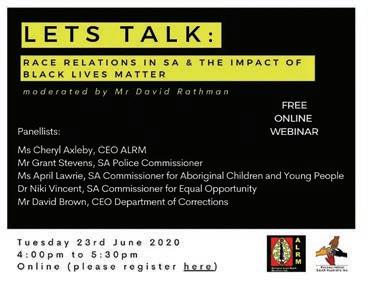
View the full forum Lets Talk: Race Relations in SA & the Impact of Black Lives Matter hosted by Reconciliation SA and Aboriginal Legal Rights Movement (ALRM) here: reconciliationsa.org.au/ uncategorized/lets-talk-racerelations-in-sa-webinar/
National Native Title Conference 2020 at Tweed Heads
This year’s National Native Title Conference titled Bumalehn Balang – Fight Strong! acknowledges the past 250 years of colonisation and creates a space for ideas and discussion about decolonisation of Aboriginal and Torres Strait Islander land, waters and resources.
The Conference will be held from 19 to 21 October 2020 on Minjungbal Bundjalung country in Tweed Heads with the support of the co-convenors AIATSIS, NTSCorp and traditional owner hosts.
Registration for the conference is now open. Aboriginal and Torres Strait Islander people are also encouraged to consider applying to attend as a sponsored delegate.
For more information, visit the Conference website here: aiatsis.gov. au/news-and-events/events/nationalnative-title-conference-2020
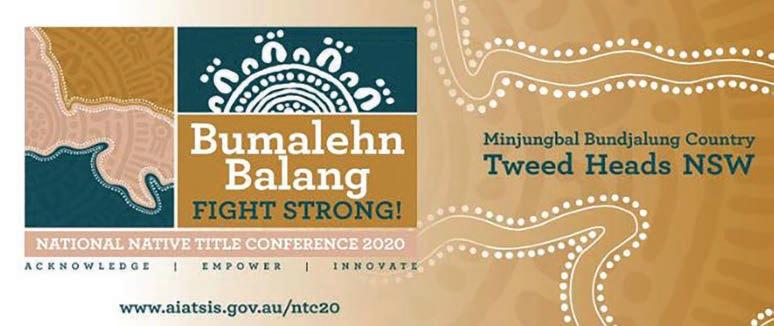
“If you’re not angry, then you’re not paying attention” Ms Fernandez said to cheers of support from the protestors.
CEO of Aboriginal Legal Rights Movement Cheryl Axleby spoke at the rally and also emphasised the lack of accountability for Aboriginal people’s deaths.
“No one’s been held accountable for all of these deaths in this country. It’s shameful. Black lives matter – yesterday, today, tomorrow and always.”
Susie Dixon, whose brother Kingsley Dixon died in custody in 1987 also spoke passionately to the large crowd. She pointed out that while this issue was receiving widespread public attention after the death of Mr Floyd, it had been a cause of pain and struggle for Aboriginal people for many years.
“I want to pay my respects to the past ancestors who fought about Aboriginal deaths in custody. Aunty Joan, Yvonne and Cheryl were a part of that movement, along with my mother. When my brother died in the Adelaide Goal he was 19 years old.
“My mother’s tree’s over there – go and have a read about it and about her fight about deaths in custody, 30-odd years ago. “This is my mother’s t-shirt here – do you know what it says? ‘You’ll kill our fighters but you’ll never kill our fight for justice’.” Elder Aunty Yvonne Aguis joined the speakers on the stage in front of the large crowd. “We’ve been protesting about this for years, but you fellas are a whole new audience, you are the next generation, don’t let it happen again!” she called. Natasha Wanganeen hosted the event and also acknowledged the pain of Elders and the emotion of seeing so many people supporting the important and longstanding cause. “That’s what we’re fighting for today that’s one of the many families we’re fighting for today” she said “Some of the Elders are coming up to me – they’re crying their eyes out. You do not know what healing you’re doing for us today, thank you” she said. Uncle Moogy Sumner sang to welcome the ancestors to the event and spoke about the deaths, calling for people to work together to heal. “We’re here to talk about death we’re here to talk about one man that brought it up for the whole world to look at. George Floyd, someone who shouldn’t have died. All the deaths in custody across this land who shouldn’t have died. All the people that died at the hands of the people that should be looking after you. It’s a shame yeah. It’s a form of genocide for us. “Over the past 14 years I’ve been doing dancing, travelling from south west Queensland to the Murray Mouth, dancing in different places and hearing the spirit of this land, me and my family, my grandchildren, my great grandchildren. “I’ve said to people who question me – how come you invite people of a different race to dance with you? I said well they live in this country now. We can go along and look after and heal it by ourselves, but why not everyone look after the country. Why not everyone do the healing?” Following the protest, Opposition Aboriginal Affairs spokesman Kyam Maher drafted legislation to create a Custody Notification Service – ensuring that an Aboriginal organisation is notified any time an Indigenous person is taken into custody. “These matters require a bipartisan approach and a strong commitment from the government to want to change the tragic record for Aboriginal people” Mr Maher told The Advertiser.
A Custody Notification Services was one of the 339 recommendations from the Royal Commission into Aboriginal Deaths in Custody almost 30 years ago.
In late June, the state government announced that the creation of such a Custody Notification Service.
Attorney-General Vickie Chapman said that the service will help ensure Aboriginal people receive culturally appropriate support and legal advice as soon as possible.
“While we have had similar arrangements in place for quite some time, there have never been any formalised legislative measures” Ms Chapman said.
“This will also bring us in line with other jurisdictions around the country who have legislated for these measures” she said.
Mrs Axleby called such a service a ‘crucial scheme’ in an opinion piece in The Advertiser.
“Having clear, transparent oversight of the police is good for all of us. It increases community confidence and should provide police with the reassurance that complaints or allegations will be handled independently and at arm’s length” she argued.
Ms Chapman said the government would continue to work closely with the Aboriginal Legal Rights Movement to determine the proposed scope and model of the service.
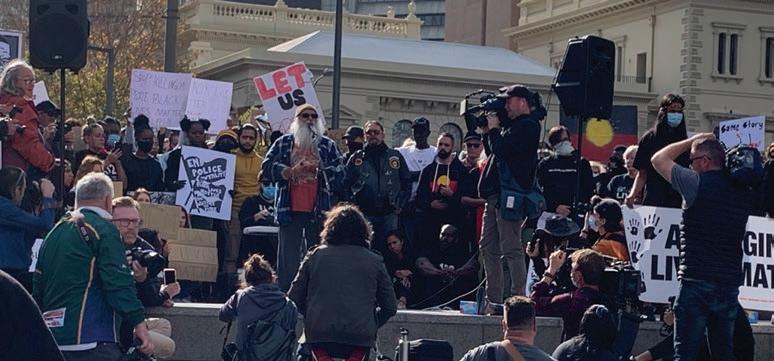
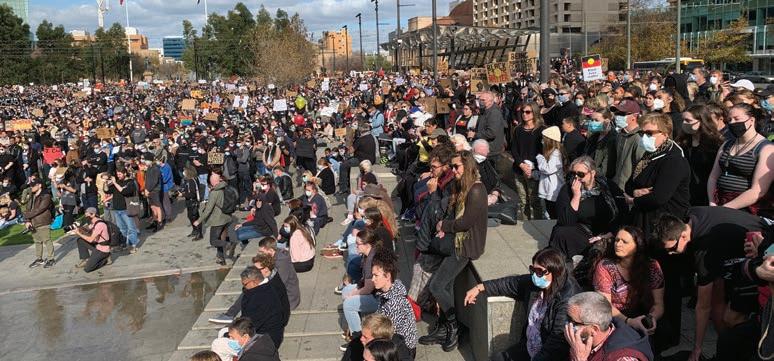
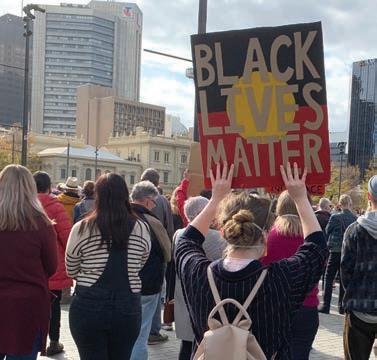
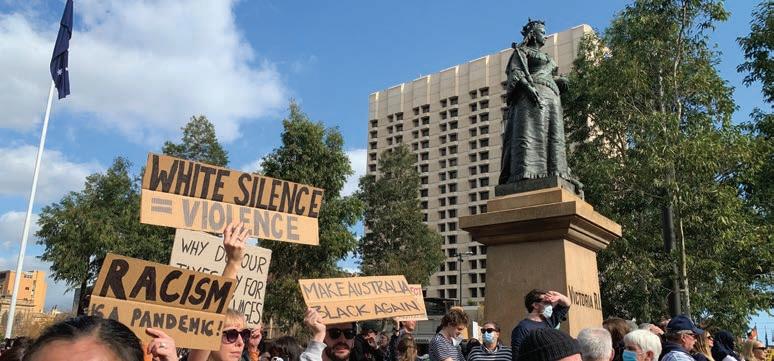
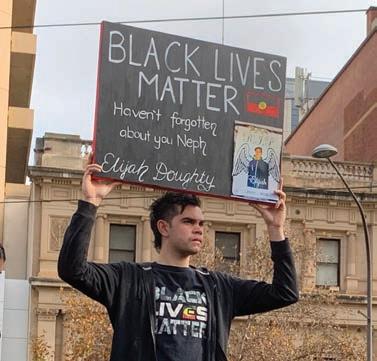
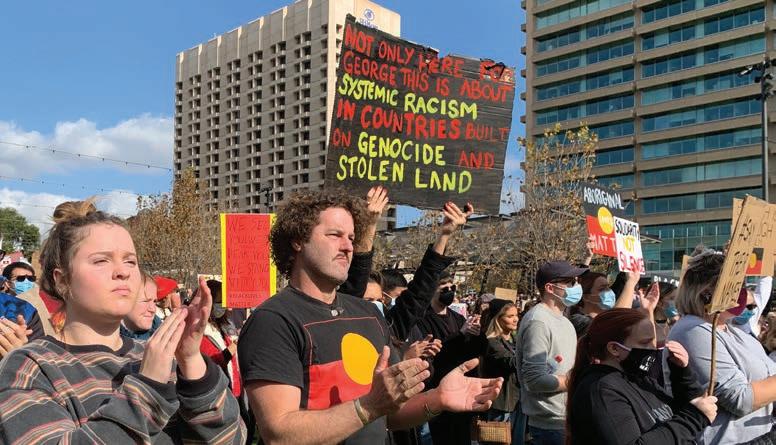
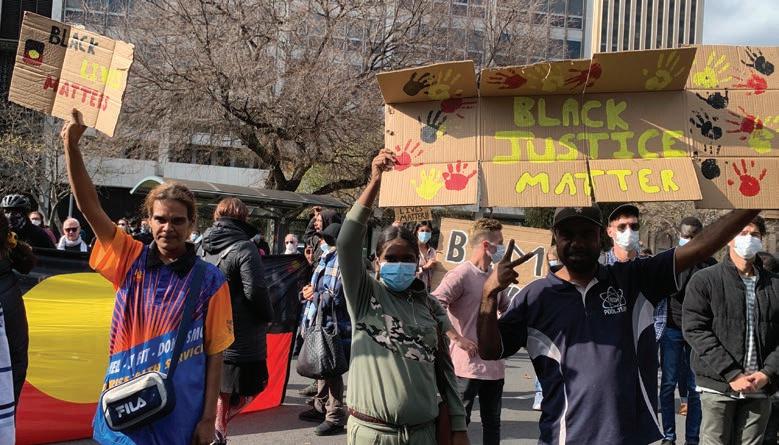
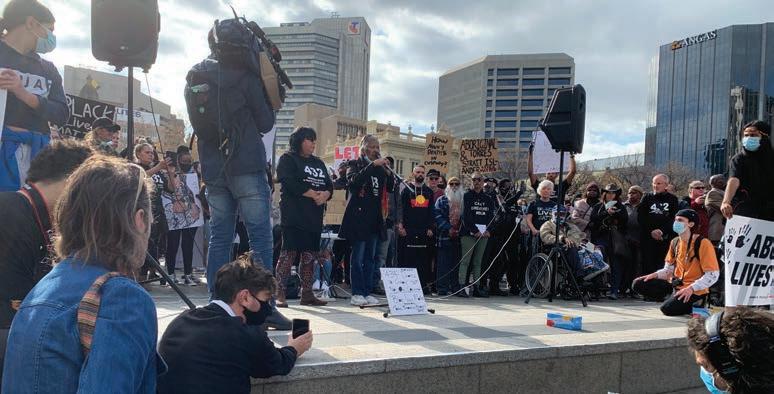
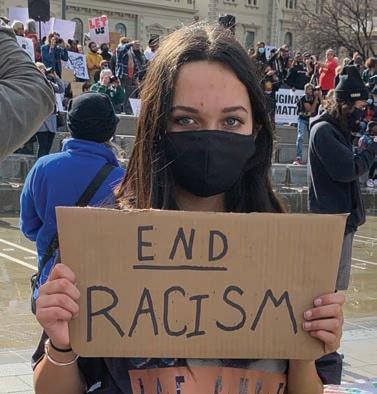
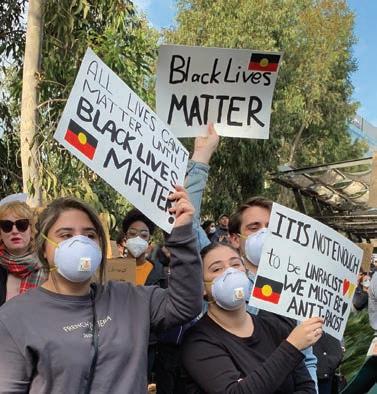
The truth is the police’s role as first responders is often harmful or fatal for our people. We must hold police, prisons and authorities accountable and criminally liable for our deaths, future and historic. We muist also end the perverse conflict of interest that arises when authorities like police and corrections officers investigate themselves.
The truth is we live oppressed by our racist legal system. Low-level offences like public drunkenness contribute to our mass imprisonment and deaths. All low-level offences that are used to target and over-police our people must be repealed.
The truth is that we are more likely to die in custody because we are overimprisoned. Despite being only 2% of the population, we are 28% of the adult prison population, no right-thinking person can allow this to continue.
Instead of building prisons we need to build futures by providing excellent public hospitals, schools and homes. Experiencing homelessness is a key contributor to our people being criminalised, social housing waiting lists can be decades long. We need to strengthen our income support systems, provide culturally safe support for our people, particularly our women feeling family violence and provide strong healing programs that connect our people back to country and culture.
By Cheryl Axleby, CEO of ALRM and Nerita Waight, CEO of Victorian Aboriginal Legal Service, Co Chairs of National Aboriginal and Torres Strait Islander Legal Services (NATSILS). Excerpt from an article which first appeared in The Guardian 29 June 2020. Printed with permission of the authors.

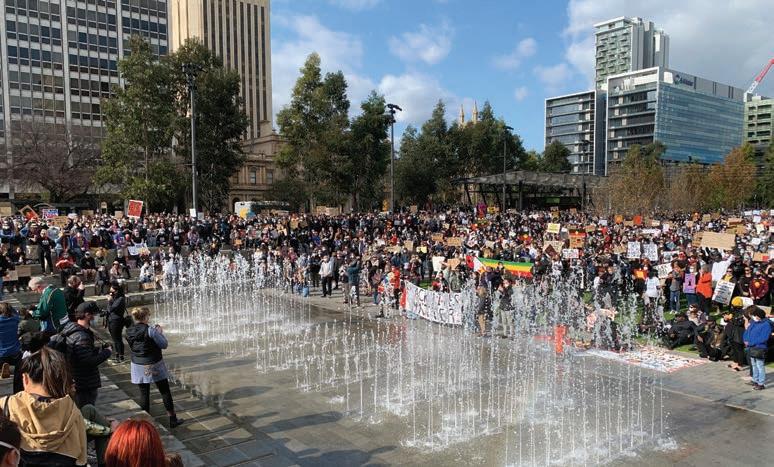
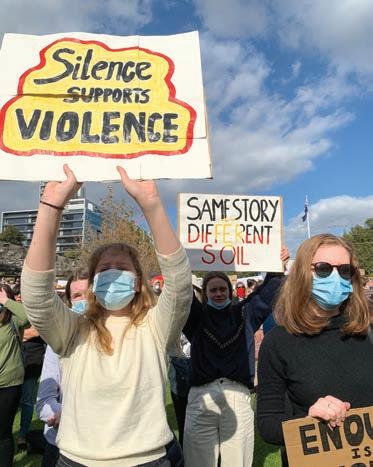
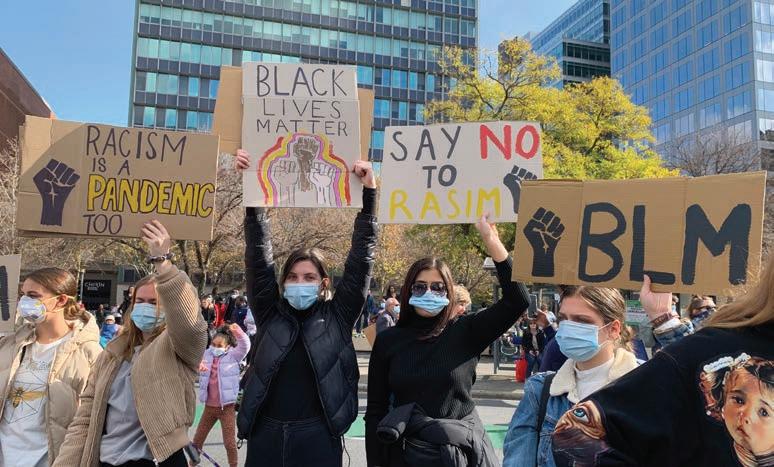
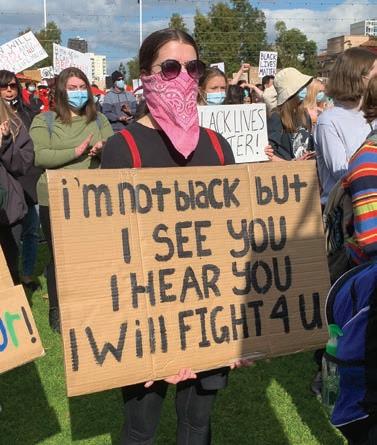
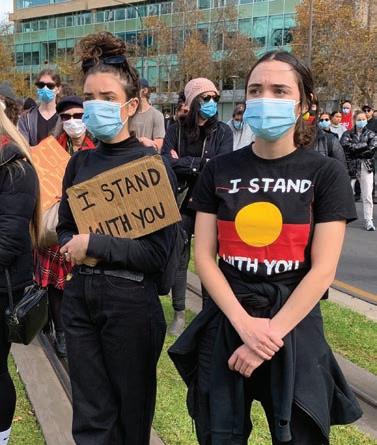
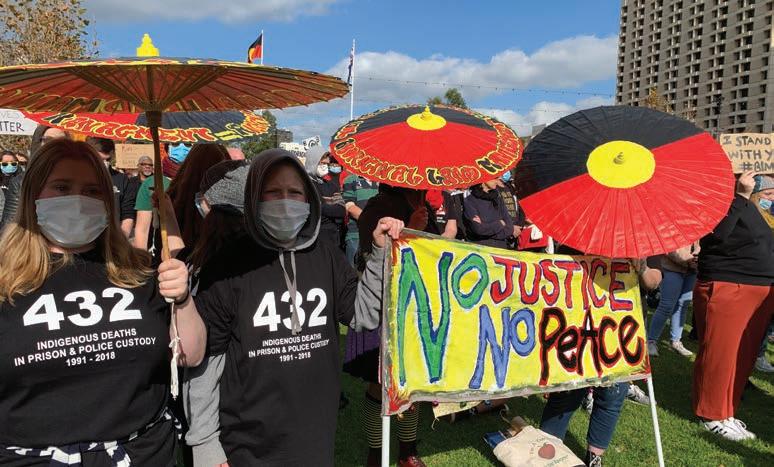
The figure of ‘432’ was sourced from The Guardian Australia, which has created a database and tally of every known Indigenous death in custody in Australia from 2008 to 2020 – the Deaths Inside database. In reporting these deaths, the paper says:
First of all, it’s not just about numbers
Every single square in the Deaths Inside database represents a person, and a family who mourn them. The traumatic effects of a death in custody are felt across generations. They can shatter families, who are left to deal with long, complex legal processes that do not yield results.
You can find the database, containing the stories of each person who died here: https://www.theguardian.com/australia-news/ng-interactive/2018/aug/28/ deaths-inside-indigenous-australian-deaths-in-custody


